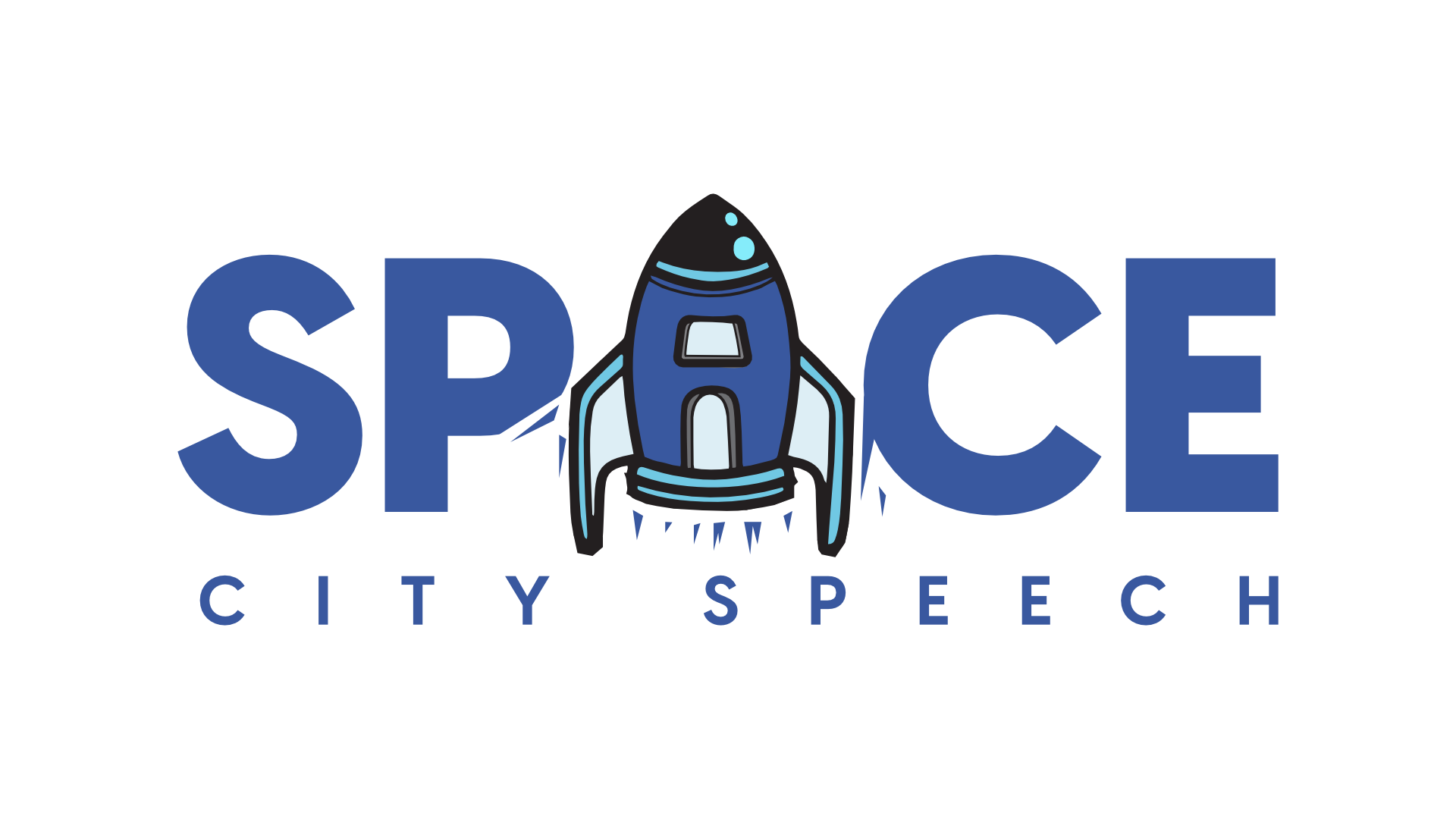Communication & Language Milestones

Space City Speech
Childhood development is very complicated. And communication skills are essential to the overall growth of infants and toddlers.
The first five years of life are a time of marvelous development in all aspects of a child’s upbringing. It’s a period of vast cognitive development and the busiest period for learning speech and language abilities. These abilities develop most suitably in an environment that is chock-full of sights and sounds and constant exposure to the speech and language of others.
Infants start communicating by crying, and then in a couple of months, begin babbling and repeating sounds. A toddler’s learning will depend on communicating with others, understanding their surroundings, expressing their wants, and asking those vital questions in life.
What are Communication Milestones?
All children acquire skills at their own rhythm. As children learn to communicate and relate to others, they enter different milestones at different ages. But realizing mainly when and what to expect can be effective, and it can usually relieve you that your child is making good progress. It can likewise help parents and guardians distinguish if they must ask for guidance and assistance.
The information is arranged under specifications to help you perceive how your child is progressing compared to other children his age and give ideas on how you can help your child communicate better with the world.
Birth to 6 months old
- Minimal meaningful language
- Only laughs, coos, smiles
- Makes gurgling noises
- Starts to babble and make sounds, such as “pa” or “ba”
- Cries in many ways when in pain, hungry, or tired
- Responds to noises by making sounds
6 months to 1 year old
- Understands “no”
- Copies movements like nodding head and shaking head
- Points at objects
- Responds to their name
- Recognizes greetings and gestures, like bye-bye
- Makes eye contact
- Starts to use sounds, signs and utter some words
1 – 2 years old
- Starts to put words together to produce short phrases
- Points to pictures in a book when described
- Follows simple directions
- Knows names of familiar people, and body parts
- Uses words to express wants and needs, such as “up” and “ball”
- Echoes sound and utters words more clearly
- Hums simple songs
- Mixes a few words with jargon
- Practices words over and over
2 – 3 years old
- Understands who, what, where, and why questions
- Understands one-step and two-step instructions
- Uses five to eight words to create long sentences
- Uses most of the speech sounds in their words, though they might still say words differently
- Show affection for favorite playmates
- Engage in multi-step pretend play
- Begins to learn the ropes of speaking in turn
- Have an understanding of the function of print (menus, lists, signs)
- Show interest in and awareness of rhyming words
3 – 4 years old
- Understands shape and color words
- Uses three-word sentences and takes on a conversation
- Uses words like “and,” “but,” and “because,” to create longer sentences
- Talks in a way that is understood by strangers nearly all the time
- Follows two- or three-part instructions
- Pronounces words, such as “I,” “you,” “me,” and “we” and uses a few plurals
- Says first name, age, and gender
- Ask questions like “why,” “where,” “what,” “when,” and “how” questions.
- Names a friend
- Shows increasingly elaborate imaginary play
- Describes recent events, like morning habits
- Creates simple rhymes (cat-bat)
- Understands some numbers and names a few colors
4 – 5 years old
- Speaks very clearly, using sentences of five or more words.
- Tells a story in complete sentences
- Uses future tense
- Says full name and address
- Becomes accustomed to routines and sequences
- Increased ability to stay on the same topic
- Follows three-part instructions
- Understands time-related words, such as “later,” “now,” “before,” and “after”
- Starts to recognize some letters, sounds, and numbers
- Take turns in progressively longer conversations
- Uses most speech sounds, though still may have problems with “s,” “r,” “l,” and “th”
What are the 4 Types Of Milestones?
Social/Emotional
Social and emotional milestones are focused on children obtaining a better awareness of their own emotions and the emotions of others. These skills also involve learning how to follow directions and rules, establish positive relationships with others, and develop confidence.
Language/Communication
This area is about how children convey their thoughts, express their needs, and interpret and understand what is said to them. Other communication milestones are learning the rules of conversation in their language and looking toward the person talking to them.
Cognitive
This area describes how a child’s brain develops. It involves how children think, discover new things, and solve problems. It also includes how children examine their surroundings to sort things. This domain likewise covers “academic” skills, such as learning letters and counting numbers.
Movement/Physical Development
This domain is about how children learn to master control of their bodies. These milestones involve fine motor skills and large motor skills. Fine motor skills pertained to fingers, hands, and arms, allowing movements that will grip and manage small objects. And large motor skills are about the development of larger muscle movements used for sitting up, standing, crawling, and walking.
What are the 4 Types Of Milestones?
Social/Emotional
Social and emotional milestones are focused on children obtaining a better awareness of their own emotions and the emotions of others. These skills also involve learning how to follow directions and rules, establish positive relationships with others, and develop confidence.
Language/Communication
This area is about how children convey their thoughts, express their needs, and interpret and understand what is said to them. Other communication milestones are learning the rules of conversation in their language and looking toward the person talking to them.
Cognitive
This area describes how a child’s brain develops. It involves how children think, discover new things, and solve problems. It also includes how children examine their surroundings to sort things. This domain likewise covers “academic” skills, such as learning letters and counting numbers.
Movement/Physical Development
This domain is about how children learn to master control of their bodies. These milestones involve fine motor skills and large motor skills. Fine motor skills pertained to fingers, hands, and arms, allowing movements that will grip and manage small objects. And large motor skills are about the development of larger muscle movements used for sitting up, standing, crawling, and walking.
What To Do If Your Child is Not Reaching Their Key Developmental Milestone?
In case your child is not reaching the milestones for their age, or when you think there could be some concern about how your child speaks, moves, behaves, learns, and plays, consult with the pediatrician and tell your worries. Responding early can be decisive.
If your child’s pediatrician notices anything that may be serious, they can refer you to a speech therapist and work with your family to figure out services that may help your child.
What is the Difference between Speech Disorder and Language Disorder?
Speech and language disorders are similar since they both result in communication problems; however, there is a difference between the two situations. The distinction between the two is that speech tackles sounds, and language takes on meaning.
Children who have difficulty understanding the meaning of what’s being said or trouble expressing their feelings may have a language disorder. A child may also have difficulties reading and writing. While children who have difficulty producing speech sounds accurately or who stammer or falter when talking may have a speech disorder. Problems with a child’s resonance or voice can also fall under this classification.
What Should I Do if My Child’s Speech or Language Appears to be Delayed?
Early intervention can render the assistance a child needs when your child appears to have speech, language, or developmental. And when you have a better knowledge about why your child isn’t talking, you can learn techniques to support speech development.
Diagnosing and treating speech and language delays at an early stage is the best way. Contact the child’s pediatrician if you have some worries regarding your child’s language or speech development. The pediatrician may order a hearing test and refer you to a speech-language pathologist (SPL).
The SPL will interview you about your child’s communication and overall development. The SPL will also conduct special verbal and nonverbal tests to evaluate your child. Depending on the evaluation outcome, the speech-language pathologist may recommend exercises you can perform at home to promote your child’s development.
Here are some ways to promote speech and language development at home:
- Concentrate on communication. Talk with your child, let them sing, and stimulate imitation of gestures and signs.
- Read books together. Start reading when your child is still young. Look for age-appropriate books or picture books that drive children to look as you name the images.
- Use daily situations. To develop your child’s language and speech, talk your way throughout the day. Point out objects or sounds at home, at the grocery store, in the car, or anywhere you go. Keep things simple, but refrain from “baby talk.”
Have questions?
Virtual Speech Therapy is a convenient resource that will assist you or your loved one in developing language and communication skills wherever you are. Delivering speech therapy to an online context reduces such difficulties as travel, lobbies, and lost time.
If you want a briefing kit including quotes or have some inquiries regarding obtaining online speech therapy for your child or loved one and wish to talk, please don’t hesitate to call me at (540) 325-6375. You may also email me at he***@sp*************.com.
Contact us for more information!
As per usual, when talking about developmental milestones, it’s important to note they are guidelines and that every child is different. Don’t worry if your child is a couple of months later or earlier than the milestones posted above.
But if you are anxious that they aren’t progressing as they ought to be or would simply want to confirm, call us at (540) 325-6375 or by email. We can help you get to the bottom of any concerns.
